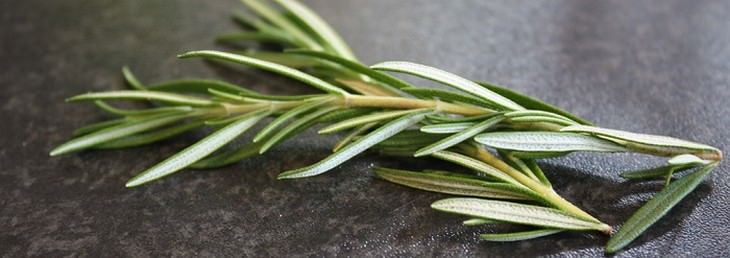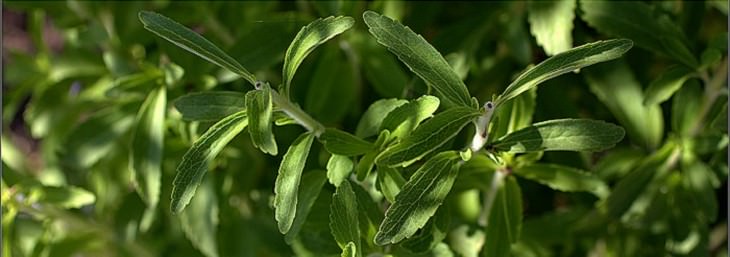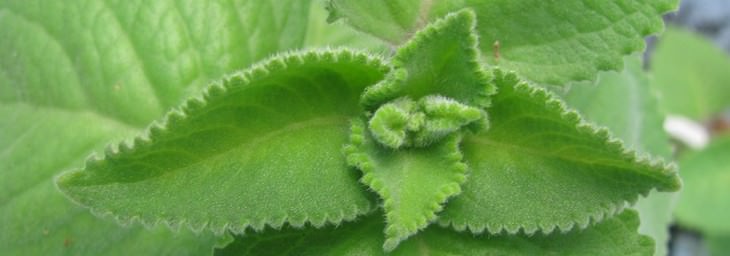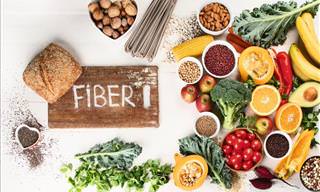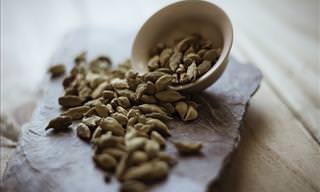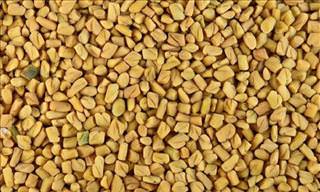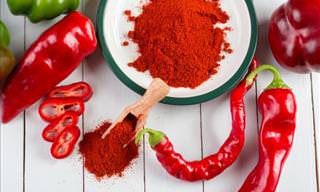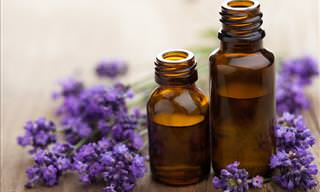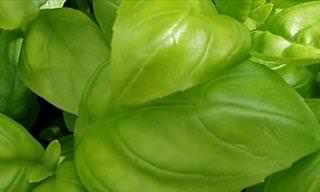Diabetes is a metabolic disease characterized by a high concentration of glucose in the blood and urine, so it is very important to keep an eye on food intake in order not to worsen the situation and even to improve it.
Fortunately, there are many herbs and spices known for their medicinal properties that help, among other things, fight against diabetes, with which tasty and healthy meals can be prepared. So, as you cook your next meal, try to incorporate some of the 15 herbs and spices on the list below, thus protecting yourself and the people you care about from this difficult illness.
1. Basil
Basil, has a very important medicinal quality; it can help control blood sugar levels in diabetics, so it is recommended to use it frequently to season different foods. Basil combines beautifully with salads, soups and pesto, and other wonderful dishes. It has an aroma that reminds us of the summer of Italy.
2. Blueberries
Blueberries contain an anthocyanin pigment that contains antioxidants that fight diabetes, strengthen the heart and reduce the risk of inflammation and accumulation of lipids. Studies show that daily consumption of fresh blueberries in large amounts reduces signs of inflammation and improves glucose tolerance in people with metabolic syndrome (which may cause type 2 diabetes).
The fruit can be eaten raw or cooked, and it can also be dried. Due to its sweet-sour taste, it is used to make jams, liqueurs, and syrups.
3. Chamomile
Chamomile is often used as a medicinal herb as well as to make infusions. Chamomile reduces blood sugar and prevents complications in diabetics by helping the digestion process and cleaning blood from excess sugar. Moreover, after a long day of work, there is nothing like a cup of warm chamomile tea that inspires both physical and mental calm.

4. Cinnamon
Cinnamon is used in preparing pastries and dishes with its inner shell used as a spice, both in its natural form as a stick and as a powder. Studies have shown that cinnamon is effective in lowering blood sugar levels in healthy people and in people with type 2 diabetes, but other studies have found that cinnamon does not affect A1C levels so the findings are inconclusive.
What's more, cinnamon has a beneficial effect on weight loss because it helps lower cholesterol and speeds up metabolism. It is recommended to combine the cinnamon with beans, brown rice, lentils or meat dishes, and of course, there is no need to add sugar.
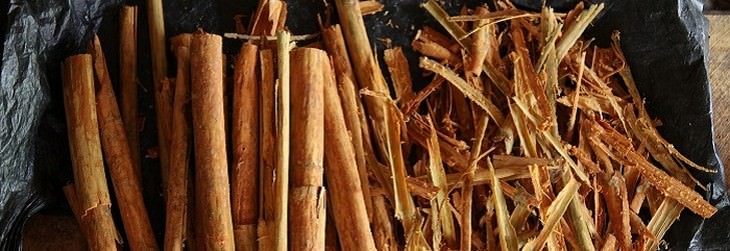
5. Cumin
Cumin has a unique and very strong taste and it blends well with red stews or simple brown rice. When you add cumin to your food, use it generously as it lowers blood sugar and cholesterol, which can be very beneficial for diabetics. In addition, cumin has a positive effect on the end products of glycation of amino acids. Such formation of sugar is considered dangerous because it can alter the structure of the tissue in which it was created and damage the body, but cumin can balance these processes and prevent the glycation of amino acids.

6. Medicinal dandelion
Medicinal dandelion is considered a pest plant because its growth interferes with the growth of other plants in the field or garden, but it is an important medicinal herb. Its leaves are rich in vitamin A, C, calcium, and iron. In addition, it helps in reducing weight, which is very important for diabetics and can have a great impact on their health.
It also increases the flow of urine and helps in the body cleansing process. The young leaves are suitable for a salad, without the need for cooking, although the larger leaves require cooking because their taste is bitter.

7. Dill
Dill, originally comes from Southwest and Central Asia. Dill is known for its ability to increase milk production in lactating women, but its medicinal properties can also be used to treat diabetes. Researchers have found about 70 different components that exist in dill that help fight this disease, so it is important to consume it frequently. Dill blends perfectly with fish, cheese, eggs, and mushrooms.
8. Fennel
Fennel has a delicate anise flavor, and it is recommended to use its leaves as a green for vegetable salads, with its leaves and seeds containing antioxidants and fiber that help reduce cholesterol. In addition, fennel lowers blood pressure because of the high potassium content in it, which helps to remove sodium from the body through urine.
In India, it is customary to chew fennel seeds after a meal to clean the teeth and freshen the breath and it’s considered an excellent cough suppressant, making it a natural treatment for a common problem in diabetics.

9. Garlic
Garlic is used for medical purposes all over the world because it is very effective against infections and inflammations, and contains allicin, sulfur, vitamin B1, vitamin B3, and fluorine.
Also, garlic has very strong anti-inflammatory properties, which suppress the cytokines (small proteins) in diabetes, and is also known to lower sugar and fat levels in the blood, strengthen the heart, and prevent the development of cancer cells.

10. Ginger
Ginger has a sharp and refreshing taste and is mainly used for seasoning in a variety of dishes containing meat, chicken and vegetarian dishes. Ginger is a perfect herb supplement for fighting diabetes and high cholesterol because it attacks diabetes from several directions and even helps in weight loss.
Moreover, in a study in 2014, it was shown that people who consumed 3 grams of dry ginger powder for 30 days experienced significant improvements in blood glucose levels, cholesterol, and other important measures. Those who do not like the taste of ginger in food can try to cut a piece of fresh ginger and put it in the cup of tea.

11. Rosemary
Rosemary branches are suitable for use in many dishes, such as meat dishes and vegetarian dishes. Try to add it to a cup of tea and enjoy a relaxing and delicious drink. Rosemary plant contains antioxidants that are useful in the fight against diabetes and it helps to treat metabolic syndromes and is also effective in fighting against various types of cancer.
12. Sage
Sage is one of the most common and ancient herbs. It contains antioxidants proven to be beneficial in the fight against diabetes and is a source of essential fatty acids. The strong taste of the sage goes beautifully with dishes and also fits as a relaxing addition to a cup of tea. Beyond that, sage tea with honey helps against colds and other winter illnesses.
13. Stevia
The Stevia plant is among the few sweeteners that do not harm diabetics, even though it is sweeter than regular sugar. Although using Stevia will not help eliminate the craving for something sweet, this plant has a positive effect on blood sugar and insulin levels after a meal. In addition, the stevia plant can be grown easily in a flowerpot on the windowsill where you can pick some leaves off of it whenever you want to enjoy its benefits.
14. Thyme
Thyme is a spice plant with an aromatic smell and its amazing taste making it a good addition to any dish. Thyme contains about 75 phytochemicals (a generic name for compounds found naturally in plant foods) that are active in fighting diabetes and have proven to be very effective in their activity. Thyme is rich in iron and is used quite a bit in cooking meat dishes, soups, eggs and more. Although it has a dominant flavor is doesn’t hide the taste of other herbs. Thyme can be purchased either dried or fresh.
15. Turmeric
The turmeric root is produced with a delicate flavor that gives the food a golden color and is used mostly in powder form, in its fresh form it contains potassium, vitamin C, and antioxidants. It is probably the best spice to prevent cancer and it also contributes greatly to diabetics because it helps against aging, protects the heart and helps in weight loss.
In order to test the effect of this wonderful root, a study of 240 people diagnosed with pre-diabetes was divided into two groups: an experimental group and a control group. The researchers administered turmeric-based capsules to the experimental group each day, while the control group consumed a placebo. It was found that many members of the group who took the placebo developed stage 2 diabetes while those in the study group who consumed turmeric did not develop diabetes at all, so it is important to start adding turmeric to your diet regularly.
 Go to BabaMail
Go to BabaMail












